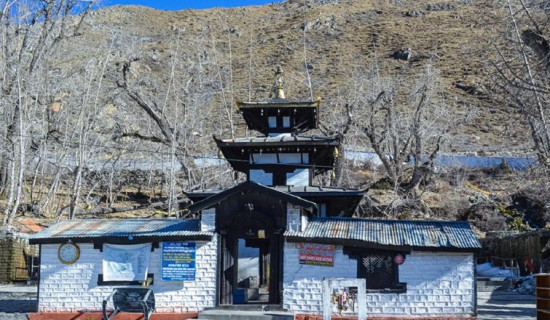- Monday, 5 May 2025
Preserving Culinary Heritage Of Nepal
‘You are what you eat’ is a proverb that is frequently used to promote healthy eating. However, our food culture plays a significant role in our cultural identity in addition to being connected to our health. A community's unique cuisine, specific food items, and food preparation methods are craucial components of its cultural identity.
Regional distinctions are often discussed in terms of diversity in food culture, which is greatly influenced by natural variables like geography, height, temperature, and climate, as well as the local people's religious and cultural beliefs. The region's food production is impacted by the level of technology in use. Despite being a small country, Nepal is a melting pot of several food cultures due to its geographical, cultural, religious, and climatic diversity. In the contemporary competitive and globalised culinary sector, those food cultures must be safeguarded and promoted as the actual assets of the nation.
Suresh Chandra Basnet's book, "Nepali Cook Book: The Taste of Himalaya," stands as a praiseworthy endeavour to safeguard and celebrate Nepali cuisine and culinary traditions, countering the trend of embracing foreign gastronomy in the country. In a time when many are drawn to international flavours, this book emerges as a valuable contribution to preserving and showcasing Nepal's rich culinary heritage.
As a product of more than two decades of extensive research and the experiences of Nepali chefs, this book is an attempt at a brief and insightful summary of the gastronomy of the Himalayan country of Nepal, giving its cuisines with a culturally diverse history the recognition that they truly deserve. Though the book is written in the English language, the writer has presented the terminologies of Nepali gastronomy, cuisines, and ingredients in both their typical Nepali names and their proper English translations. From this, both Nepali and English-speaking readers are sure to benefit.
The author has attempted to provide a glimpse of some typical Himalayan foods that are consumed in the Himalayan region, the high-altitude territory of Nepal, including Sikkim in India and Tibet in China, at the beginning of the book. It has also covered the key characteristics of Nepali cuisines that are passed down from generation to generation as nutritious cuisines. Before beginning the process of making Nepali dishes, comprehensive details about the history of Nepali cuisine, the names of the main ingredients, the equipment used, the food products, and measurement and weighing procedures have been supplied. The book is significantly more interesting and informative.
The writer has included the names of practically every utensil and food item, along with their origins and functions, in the section on Nepali utensils and food commodities. These items include food grains, beans, lentils, herbs, and spices. It gave the book a distinctive Nepali flavour. More than 70 Nepali recipes served as appetisers, soups, snacks, lunch, supper, appetisers, and desserts include detailed preparation instructions as well as the number of components needed. Each page of the book is attractive and pleasant to read thanks to the content and images of relevant topics and foods.
By exploring food traditions from many locations and ethnic groups, the book has also been able to portray them as inclusive. The main dishes of the Terai, mountains, and hills, as well as the culinary traditions of the largest ethnic groups, have all been covered. Some representative cuisines are listed in the book along with their preparation methods and ingredients, including Mo. Mo., Yomari, Sikarni, Chukauni, Chamre, Kwati, Sekuwa, Sukuti, Chhoela, Aloo Tama Bodi, Gundruk Bhatmas Sandeko, and Kodoko Jhol. Another insight into the rich culture of Nepal is provided by the book's explanation of the relationships between various foods and Nepali culture, traditions, and festivals. As a working chef, Basnet has been able to show his professionalism by presenting the diverse food-making processes of different communities and regions in a simple and generalised form, giving some input of his own.
Basnet, the writer of the book who is currently working in a restaurant in California, USA, has also raised the issue of food diplomacy in his book as a means to promote Nepali food culture abroad and contribute to the Nepali tourism industry through gastronomy.
Though Basnet has written and presented Nepali cuisines and their preparation processes simply and understandably, there are some issues with professional editing and organisation of the presented information that he has to improve in the next edition. Besides, the book has yet to cover the foods of some ethnic communities in Nepal. Despite some flaws, the publication of this book is a benchmark for the preservation and promotion of Nepali food culture in the national and international spheres.
(Khanal is a journalist at The Rising Nepal.)

















